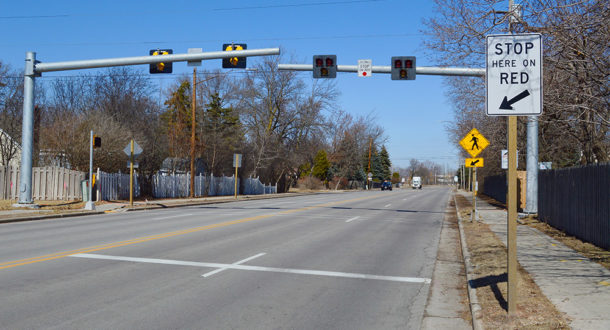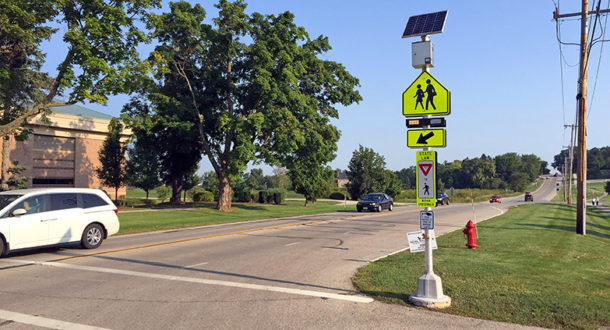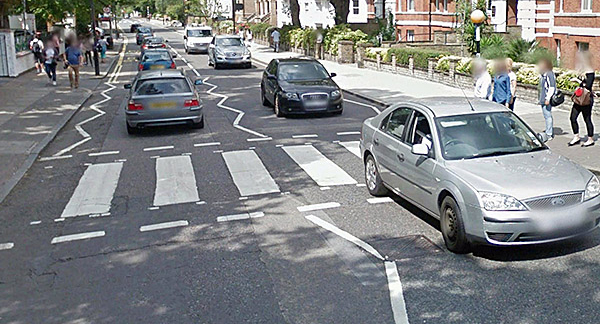HAWK Signals Get Drivers’ Attention, Let Pedestrians Cross Safely

Crosswalks have come a long way since The Beatles made one famous by picturing it on the “Abbey Road” album nearly 50 years ago. Paul McCartney felt comfortable enough to cross the road barefoot and out of step with the other Beatles during their “Band on the Walk,” but what happens when safety is a concern at your crossing?
The HAWK is in the Air
One of the latest innovations is the HAWK beacon, which stands for high-intensity activated crosswalk beacon. The beacons are typically installed at crosswalks that feature the traditional painted crossing and crosswalk signs on both sides of the road. The HAWK beacon adds traffic signal displays on both sides of the road that stop traffic in both directions when push buttons are pressed by someone wishing to use the crosswalk. HAWK beacons, because of their ability to stop traffic with red traffic lights, work well on busy streets where you have a high volume of pedestrian traffic but no traditional traffic signals to periodically stop traffic.
The beacon’s lights remain dark to motorists until someone activates them by pushing the button. When the lights come on, drivers initially see flashing yellow lights that turn solid yellow, followed by solid red lights. Drivers should stop their vehicles when the yellow lights turn solid if it’s safe to do so. When the lights go to solid red, all vehicles are required to stop to allow pedestrians to safely cross the street.
When the crosswalk is cleared of pedestrians, drivers can proceed with caution when the lights begin to flash red.
Improving Safety with a HAWK Crosswalk
Pedestrian safety can be greatly improved with a HAWK crosswalk. According to a Federal Highway Administration (FHWA) study conducted at 21 HAWK crosswalks, total crashes fell by 29%, and pedestrian crashes were reduced by 69% after the HAWKs were installed.

Ayres Associates’ traffic engineers have discussed HAWK beacons with clients, and we’ve designed a similar – but less intense – pedestrian-activated crossing tool called a rectangular rapid flashing beacon (RRFB). The RRFB, whose use has been reinstated through an interim approval by the FHWA in late March, is also activated with a push button or by motion sensors but lacks the complex traffic signals that come with a HAWK. When nearing a crosswalk where an RRFB is installed and activated, the driver would notice flashing LED lights, warning the driver to yield to the crosswalk’s users.
For more on how our crosswalk designs help keep students safe near schools, check out this blog post.

The Beatles made it across Abbey Road without any incident, but their walk would have been much safer with a HAWK beacon. I say we all “Come Together” and “Live and Let Live” with safe crosswalks – if you listen to what this man says.

Post a comment: